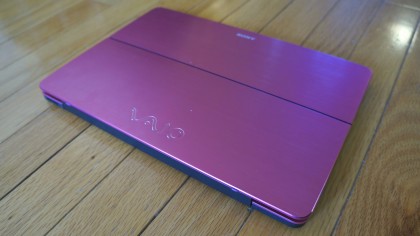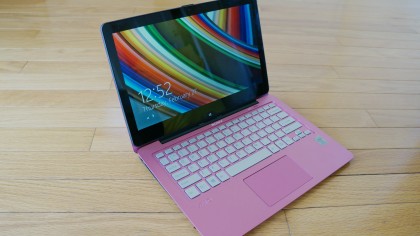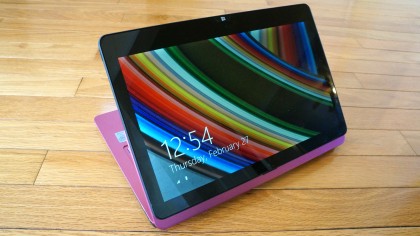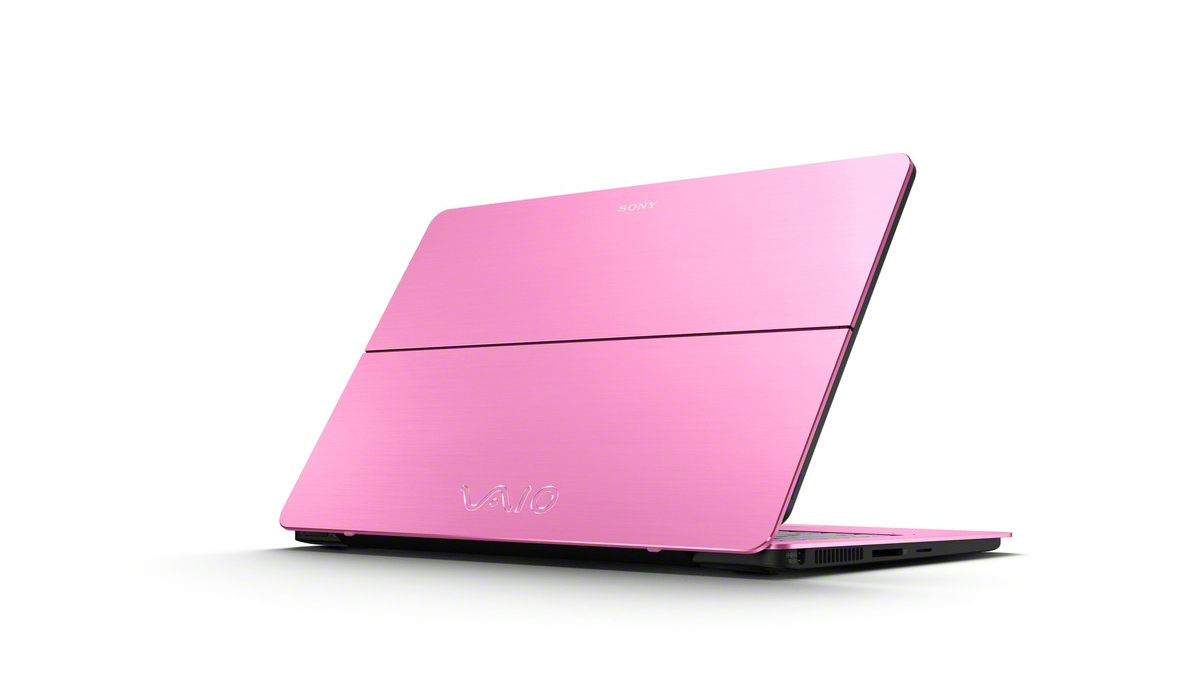TechRadar Verdict
Sony's Vaio Fit 11A can either be a notebook or tablet, but the experience falls short regardless of form factor. The Vaio line ends on a 'meh' note.
Pros
- +
Bright HD screen
- +
Responsive touch control
- +
Very portable
Cons
- -
Stuffy, cramped keyboard
- -
A heavy, awkward tablet
Why you can trust TechRadar
Windows 8 has helped blur the lines between notebook and tablet design, birthing hinges once considered implausible. Notebook buyers have responded in kind, enjoying the touch-based interfaces and newfound freedom to lay on couches in ridiculous positions and still find a comfortable way to use their computer.
The Sony Vaio Fit 11A no doubt fits the post-Windows 8 design aesthetic – with its flippable display that quickly transforms this clamshell from traditional notebook to tablet. It's inherently Windows 8, working both as a notebook and a tablet without any changes to the software.
The price will no doubt be appealing to people who desire the design flexibility. At $799, it's significantly cheaper than the $1,099 Lenovo Yoga 11S and the $1,499 Asus Transformer Book TX300.
But with a drop in price also comes certain trade-offs. The question is whether those concessions are worth the convenience of a flexible form factor.

Despite years of laptop manufacturing, this notebook also marks the end of the Vaio computer division for Sony. Instead, Sony is selling the brand, with plans to put more focus on mobile. Sony cites a changing desktop landscape – unmistakably due to the radically different Windows 8.
The Vaio Fit 11A is an attempt to address consumers' changing notebook demands, but it's also a reminder why Sony is leaving this business. Consumers want notebooks and they also want tablets, but do they want them together? Is there a single computer experience that can satiate customers' desire to have it all?
The Fit 11A is certainly a solid go at it. But is it worth your money?
Design
The biggest thing that makes the 11A unique is that its display can flip 360 degrees, making the entire device a large tablet. To show off this crafty transformation ability, the notebook has a large black crevice that runs horizontally on top of the aluminum lid when the notebook is closed. Aside from that line, there are only small Sony and Vaio logos on the lid, which provide pleasantly subtle branding.

Lifting the lid reveals a traditional laptop, with a full QWERTY keyboard slightly recessed into the plastic deck. Unfortunately, this keyboard leaves a lot to be desired. The key travel length is quite stunted and the 11-inch form factor means the keys are uncomfortably cramped. Although I had mostly gotten used to the size of the keyboard by the end of my week with the notebook, I was overjoyed to get back on a full-size keyboard when I was done.
The clickpad is centered below the keyboard and – at 4.5 x 2.5 inches – provides plenty of room for moving around and performing Windows 8 gestures. I never had any issues swiping in from the right in order to open the Charms menu, or swiping in from the left to cycle through open applications.
On the hinge that connects the deck to the display, there is a small switch that unlocks the screen so that it can flip around into tablet mode. There are small magnets that hold the display in place when facing either direction, which gives each mode a pleasantly secure feel. When the lid is locked in notebook mode, everything feels tight and secure.
Makes for a tacky tablet
It's obvious that Sony understands that people like to use tablets, but the 11A in tablet mode is proof that they don't understand why people want to use tablets. The 11.6-inch widescreen display is superbly awkward in portrait mode and – while movies looked great – the unit was too heavy to comfortably prop up the laying back on the couch. And forget using it with just one hand.

Not to mention, the 11A looks like an unwieldy beast in tablet mode, especially when compared to the Lenovo Yoga 11S, which lays nice and flat when the screen is flipped all the way around. The 11A forms a slightly wedge-shaped tablet, with the display also not lining up flush with the top of the tablet. The flexibility was nice when I propped it on a table, like the Lenovo Yoga's stand mode, but I wished I could simply detach the screen from the keyboard like the Asus Transformer Book TX300.
One of the oddest design choices is the inclusion of a camera … on the bottom of the notebook. It makes sense when compared to other tablets, most of which have a rear-facing camera, but looks odd and out of place on the 11A. Flipping the device over and seeing a tiny camera lens, centered between two rubber non-slip pads, makes it seem like a device suffering from identity issues.
Power, Interrupted
By far the worst design offense for me is Sony's easy-release power cable connector. The concept is valiant: create a plug that won't pull the notebook off the table if you trip over the cord. But the execution drove me crazy. It never feels like it's ever really connected – the cord is constantly wobbly, making you second guess whether you actually put the right plug in the right port.
And it disconnects way too easily. Almost every time I picked up the notebook, the plug would simply drop out. It did save the notebook from falling of my table a few times, since the power cord is fairly short and my power outlet pretty far away, but I definitely cursed the power cord connector numerous times over the course of the week.
